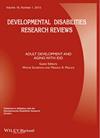Shane L. Rea, Brett H. Graham, Eiko Nakamaru-Ogiso, Adwitiya Kar, Marni J. Falk
{"title":"Bacteria, yeast, worms, and flies: Exploiting simple model organisms to investigate human mitochondrial diseases","authors":"Shane L. Rea, Brett H. Graham, Eiko Nakamaru-Ogiso, Adwitiya Kar, Marni J. Falk","doi":"10.1002/ddrr.114","DOIUrl":null,"url":null,"abstract":"<p>The extensive conservation of mitochondrial structure, composition, and function across evolution offers a unique opportunity to expand our understanding of human mitochondrial biology and disease. By investigating the biology of much simpler model organisms, it is often possible to answer questions that are unreachable at the clinical level. Here, we review the relative utility of four different model organisms, namely the bacterium <i>Escherichia coli</i>, the yeast <i>Saccharomyces cerevisiae,</i> the nematode <i>Caenorhabditis elegans</i>, and the fruit fly <i>Drosophila melanogaster</i>, in studying the role of mitochondrial proteins relevant to human disease. <i>E. coli</i> are single cell, prokaryotic bacteria that have proven to be a useful model system in which to investigate mitochondrial respiratory chain protein structure and function. <i>S. cerevisiae</i> is a single-celled eukaryote that can grow equally well by mitochondrial-dependent respiration or by ethanol fermentation, a property that has proven to be a veritable boon for investigating mitochondrial functionality. <i>C. elegans</i> is a multicellular, microscopic worm that is organized into five major tissues and has proven to be a robust model animal for in vitro and in vivo studies of primary respiratory chain dysfunction and its potential therapies in humans. Studied for over a century, <i>D. melanogaster</i> is a classic metazoan model system offering an abundance of genetic tools and reagents that facilitates investigations of mitochondrial biology using both forward and reverse genetics. The respective strengths and limitations of each species relative to mitochondrial studies are explored. In addition, an overview is provided of major discoveries made in mitochondrial biology in each of these four model systems. © 2010 Wiley-Liss, Inc. Dev Disabil Res Rev 2010;16:200–218.</p>","PeriodicalId":55176,"journal":{"name":"Developmental Disabilities Research Reviews","volume":"16 2","pages":"200-218"},"PeriodicalIF":0.0000,"publicationDate":"2010-08-27","publicationTypes":"Journal Article","fieldsOfStudy":null,"isOpenAccess":false,"openAccessPdf":"https://sci-hub-pdf.com/10.1002/ddrr.114","citationCount":"61","resultStr":null,"platform":"Semanticscholar","paperid":null,"PeriodicalName":"Developmental Disabilities Research Reviews","FirstCategoryId":"1085","ListUrlMain":"https://onlinelibrary.wiley.com/doi/10.1002/ddrr.114","RegionNum":0,"RegionCategory":null,"ArticlePicture":[],"TitleCN":null,"AbstractTextCN":null,"PMCID":null,"EPubDate":"","PubModel":"","JCR":"","JCRName":"","Score":null,"Total":0}
引用次数: 61
Abstract
The extensive conservation of mitochondrial structure, composition, and function across evolution offers a unique opportunity to expand our understanding of human mitochondrial biology and disease. By investigating the biology of much simpler model organisms, it is often possible to answer questions that are unreachable at the clinical level. Here, we review the relative utility of four different model organisms, namely the bacterium Escherichia coli, the yeast Saccharomyces cerevisiae, the nematode Caenorhabditis elegans, and the fruit fly Drosophila melanogaster, in studying the role of mitochondrial proteins relevant to human disease. E. coli are single cell, prokaryotic bacteria that have proven to be a useful model system in which to investigate mitochondrial respiratory chain protein structure and function. S. cerevisiae is a single-celled eukaryote that can grow equally well by mitochondrial-dependent respiration or by ethanol fermentation, a property that has proven to be a veritable boon for investigating mitochondrial functionality. C. elegans is a multicellular, microscopic worm that is organized into five major tissues and has proven to be a robust model animal for in vitro and in vivo studies of primary respiratory chain dysfunction and its potential therapies in humans. Studied for over a century, D. melanogaster is a classic metazoan model system offering an abundance of genetic tools and reagents that facilitates investigations of mitochondrial biology using both forward and reverse genetics. The respective strengths and limitations of each species relative to mitochondrial studies are explored. In addition, an overview is provided of major discoveries made in mitochondrial biology in each of these four model systems. © 2010 Wiley-Liss, Inc. Dev Disabil Res Rev 2010;16:200–218.



细菌,酵母,蠕虫和苍蝇:利用简单的模式生物来研究人类线粒体疾病
线粒体结构、组成和功能在进化过程中的广泛保存为扩大我们对人类线粒体生物学和疾病的理解提供了一个独特的机会。通过研究更简单的模式生物的生物学,通常有可能回答在临床水平上无法达到的问题。在这里,我们回顾了四种不同的模式生物,即细菌大肠杆菌,酵母酿酒酵母,线虫秀丽隐杆线虫和果蝇黑腹果蝇,在研究线粒体蛋白与人类疾病相关的作用方面的相对效用。大肠杆菌是一种单细胞原核细菌,已被证明是研究线粒体呼吸链蛋白结构和功能的有用模型系统。酿酒葡萄球菌是一种单细胞真核生物,它可以通过线粒体依赖的呼吸或乙醇发酵同样生长得很好,这一特性已被证明是研究线粒体功能的真正福音。秀丽隐杆线虫是一种多细胞、微小的蠕虫,由五个主要组织组成,已被证明是体外和体内研究人类原发性呼吸链功能障碍及其潜在治疗方法的强大模型动物。研究了一个多世纪,D. melanogaster是一个经典的后生动物模型系统,提供了丰富的遗传工具和试剂,促进了线粒体生物学的研究,使用正向和反向遗传学。每个物种相对于线粒体研究各自的优势和局限性进行了探讨。此外,概述了线粒体生物学在这四个模型系统中的重大发现。©2010 Wiley-Liss, Inc开发与残疾,2010;16:20 00 - 218。
本文章由计算机程序翻译,如有差异,请以英文原文为准。




 求助内容:
求助内容: 应助结果提醒方式:
应助结果提醒方式:


